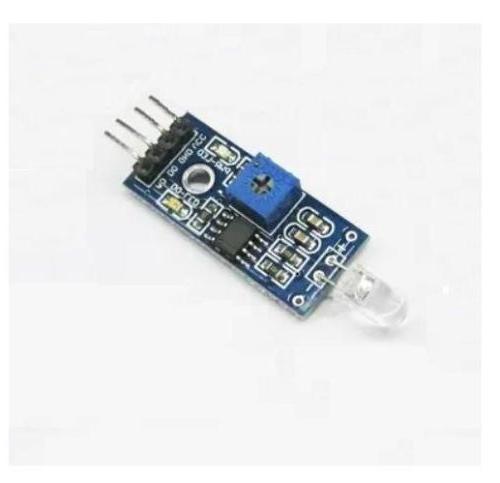LM393 as pulse powermeter sensor, swap out 'photodiode'
-
So I got one of these set up a while ago, but always had to fiddle around with it to get it lined up JUST SO with the light on my smartmeter. Over time, it would slip and require realignment, and I found it needed to be horizontal from the meter to have any hope of picking up the signal. I could go into details but to cut it short I accidentally ripped off the 'photodiode' tonight from this unit at a point where it is now junk.

This got me thinking. I don't think its a photodiode at all, rather just an LED, which can be used to detect light. Of what color I have no idea. Photodiodes look different. After doing some research I believe an LDR replacement would be too slow for this application. I also discovered that for best results for an LED light detector you need one with a wavelength at or just above the wavelength of the light you are trying to detect. So the light on my meter is red, and I happen to have a few small red clear resin LEDs in my bits box. An IR one might work too, am sure Ive got a few old remotes kicking around....
Thoughts?
-
@Matt, by the sounds of everything you have described here i would be very tempted to modify this little module to fit your purpose better, or even create your own.
Firstly, the fact that you have to be so precise with your location is due to the fact, like you state here, this module is using a basic LED to detect the light. While this is fine in most cases it does mean that the beams of light from the LED on the meter has to shine straight at the receiving LED. I would firstly decide to change this to a photo transistor over a normal LED on the receiver. This will allow you to detect the light at any angle to the photo transistor (within acceptable reasons). This may need some tweaking to the circuitry on the module though.
To determine which photo transistor to use you need to know the wavelength. Doesn't need to be perfectly exact, if you did you can purchase a optical spectrum analyzer. But i wouldn't have thought you would need to be that accurate if i'm honest. From a quick search online, a generic red LED is either 600nm, 633nm and 635nm.
Therefor i would be looking at attempting to find a photo transistor that likes to detect this wavelength in its optimum wavelength detection wave.
Just from 5 minutes worth of looking i would suggest trying something like this. If you look at its datasheet, on page 3, figure 7 shows a graph of Relative Spectral Sensitivity vs. Wavelength. You can see that its around 0.9 sensativity for your wavelength, it also has a nice 60 degrees viewing angle.
This might be worth a try. Keep me updated on your route

-
Hi Sam, just back in from the garage.
The red LED idea didnt work, wired up to the correct polarity it actually lit up, so there is current going through that end of the module. Thought Id try it the other way around, no joy there either. Sigh.
Thanks for your ideas and links, the current module as it is is way to fiddly for me. Will order one of those photo transistors and see how I go. One month shipping time to NZ though so will be a while before I get back to you.Cheers,
Matt
-
@Matt to use a LED to detect light i'm sure you have to reverse its connections, this link may be worth a scan read for you. But, again, i'm not too sure on the circuitry on that module so i can't say whether it would be a case of turning the LED around.
Have a look around for a photo transistor that is located close/cheaper to you, just make sure that the graph showing its wavelength detection includes the wavelength you need and is relatively sensitive to it.
-
I wondered that, but didnt seem to work with polarity reversed either.
Thats the article I found earlier that gave me the idea
Im thinking these might be a goer....
Thanks again...
-
@Matt said:
I wondered that, but didnt seem to work with polarity reversed either.
Thats the article I found earlier that gave me the idea
Im thinking these might be a goer....
Thanks again...I'm a little worried for the wavelength, but they might be worth a try

-
OK so rather than wait for shipping from China I went to my local Jaycar and got one of these LDRs. If the link gets broken its a cadmium sulphine LDR with a rise time of 50ms and decay of 40ms.
Works like a charm. Because its flat I can tape it directly to the LED in my power meter, covering the whole thing with black tape to ensure no ambient light problems. Two pinholes in the tape and the LDR leads go right through no probs. I have some thin wires going to the LM393 unit (so minimal weight on the LDR/Tape itself) and I guess the comparator in there is good enough to pick up the change in resistance on the LED pulses.
So if you wind up with one of these units I recommend swapping the photodiode with a high spec LDR and soldering some leads from the module to the LDR to facilitate accurate fixing to the meters LED. I used two bits off an old length of ribbon cable (IDE HDD type stuff).